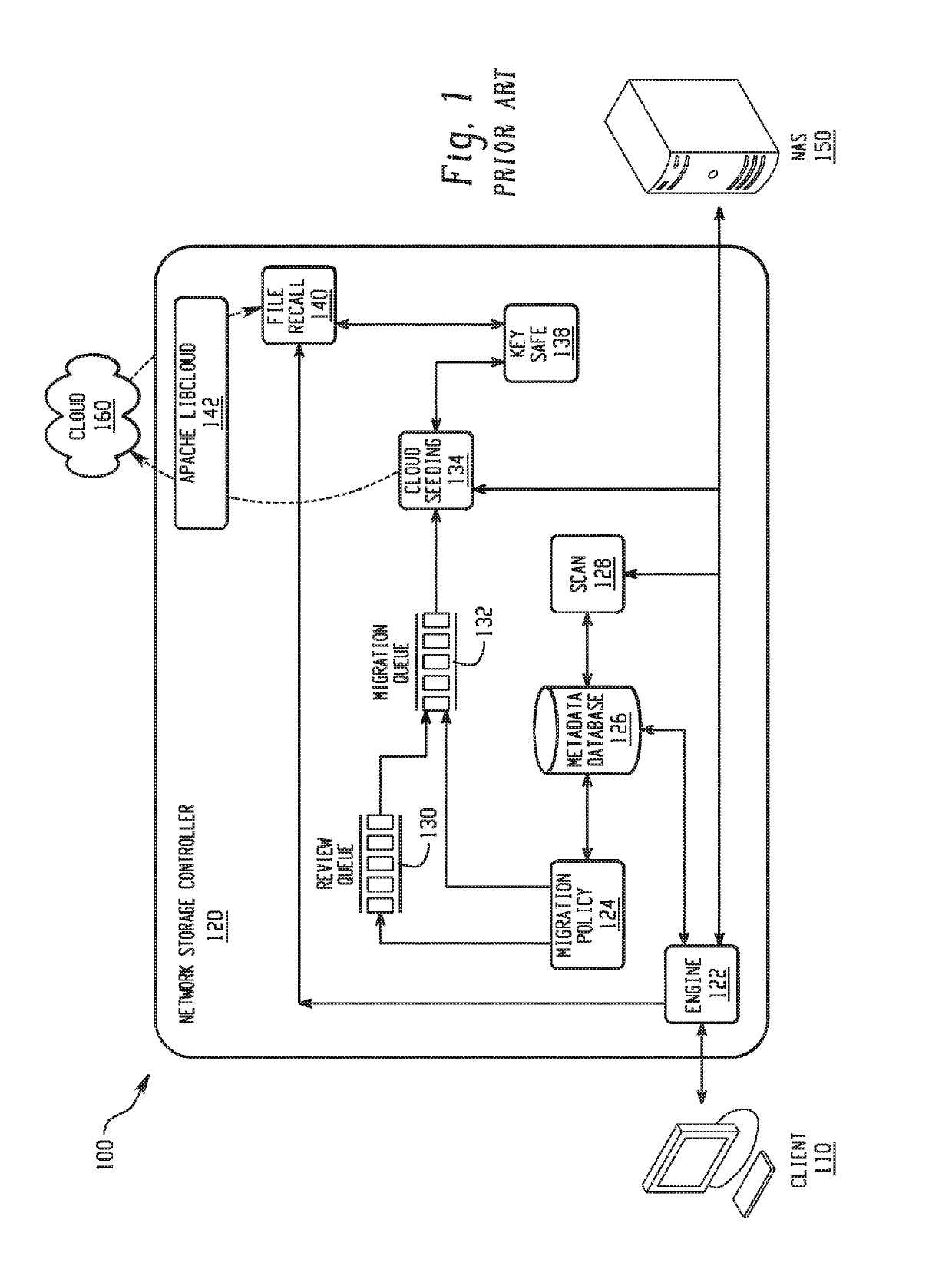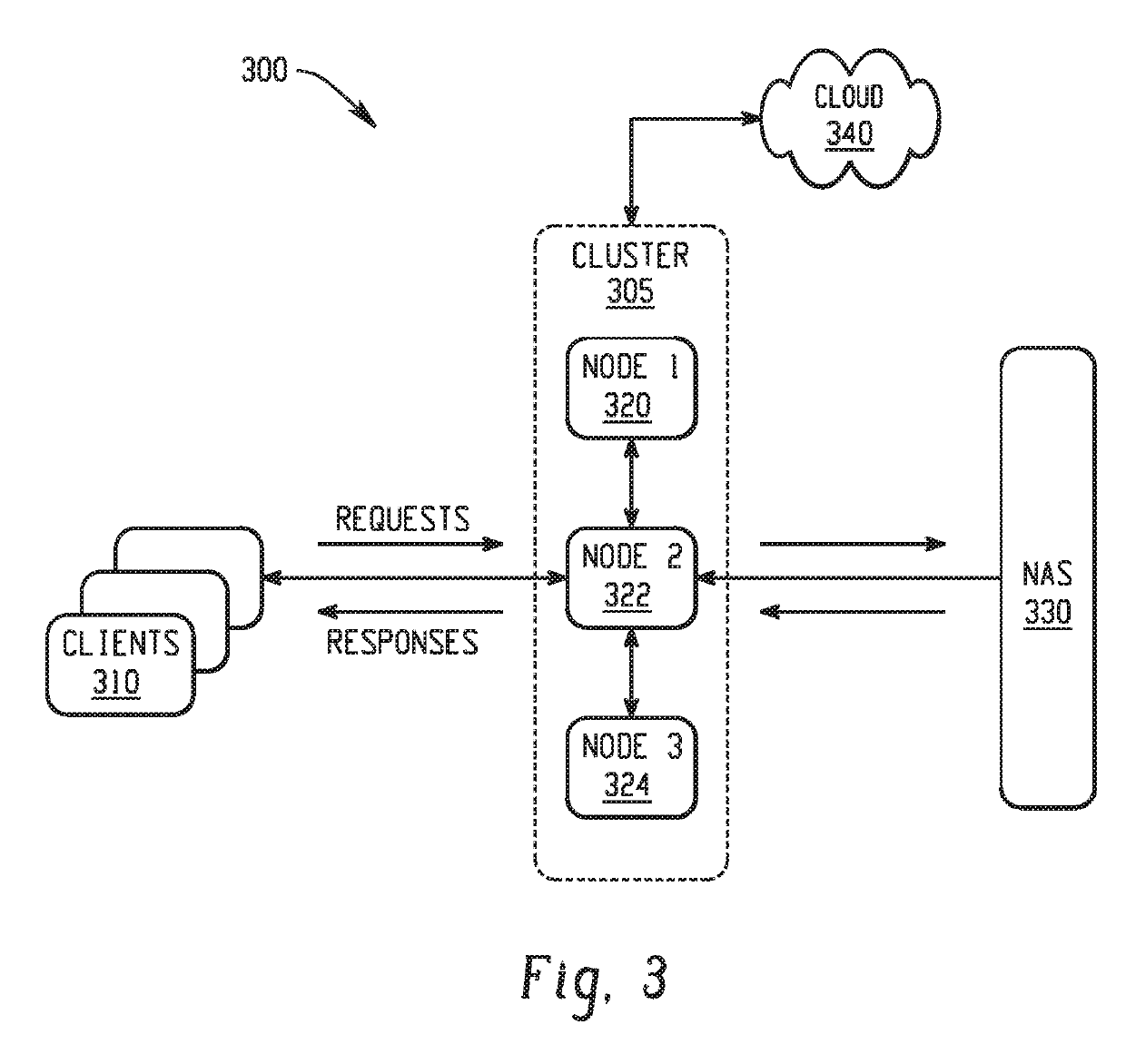Metadata call offloading in a networked, clustered, hybrid storage system
a hybrid storage system and storage system technology, applied in the field of metadata processing in a file system, can solve the problems that storage systems cannot necessarily scale to the performance required for retrieving, updating and storing, and become a bottleneck to file system performance, and end-users may experience poor and unpredictable performan
- Summary
- Abstract
- Description
- Claims
- Application Information
AI Technical Summary
Benefits of technology
Problems solved by technology
Method used
Image
Examples
Embodiment Construction
[0053]Accelerating metadata requests in a network file system can greatly improve network file system performance. By intercepting the metadata requests between a client and a NAS, offloading the metadata requests from the NAS, and performing deep packet inspection (DPI) on the metadata requests, system performance can be improved in a transparent manner, with no changes to the client, an application running on the client, or the NAS.
[0054]System performance can be further improved by providing a hybrid storage system that facilitates the migration of inactive data from the NAS to an object-based storage while maintaining active data within the NAS. The migration of inactive data frees up primary storage in the NAS to service active data.
[0055]A clustered node hybrid storage system offers multiple advantages over prior art systems. Service is nearly guaranteed in a clustered node hybrid storage system due to the employment of multiple nodes. For example, a cluster of nodes can withs...
PUM
 Login to View More
Login to View More Abstract
Description
Claims
Application Information
 Login to View More
Login to View More - R&D
- Intellectual Property
- Life Sciences
- Materials
- Tech Scout
- Unparalleled Data Quality
- Higher Quality Content
- 60% Fewer Hallucinations
Browse by: Latest US Patents, China's latest patents, Technical Efficacy Thesaurus, Application Domain, Technology Topic, Popular Technical Reports.
© 2025 PatSnap. All rights reserved.Legal|Privacy policy|Modern Slavery Act Transparency Statement|Sitemap|About US| Contact US: help@patsnap.com



